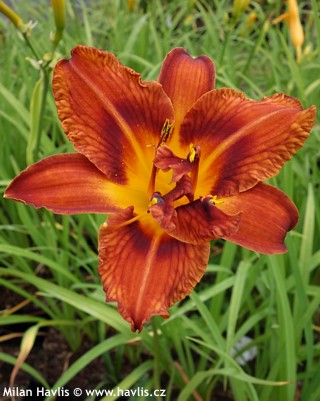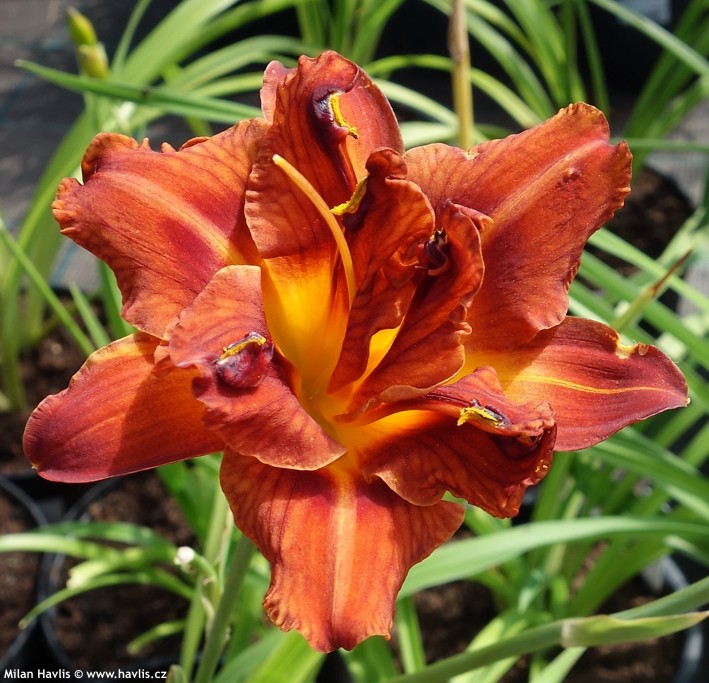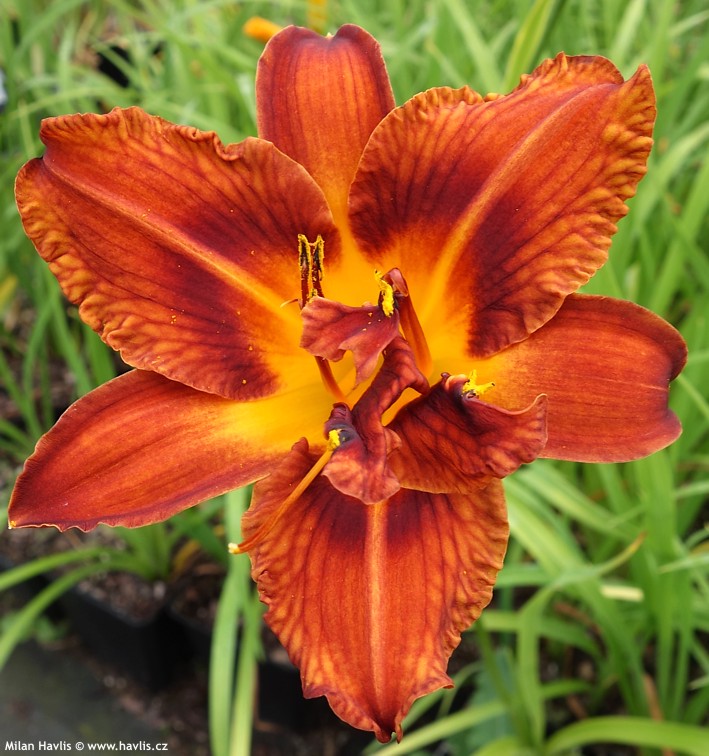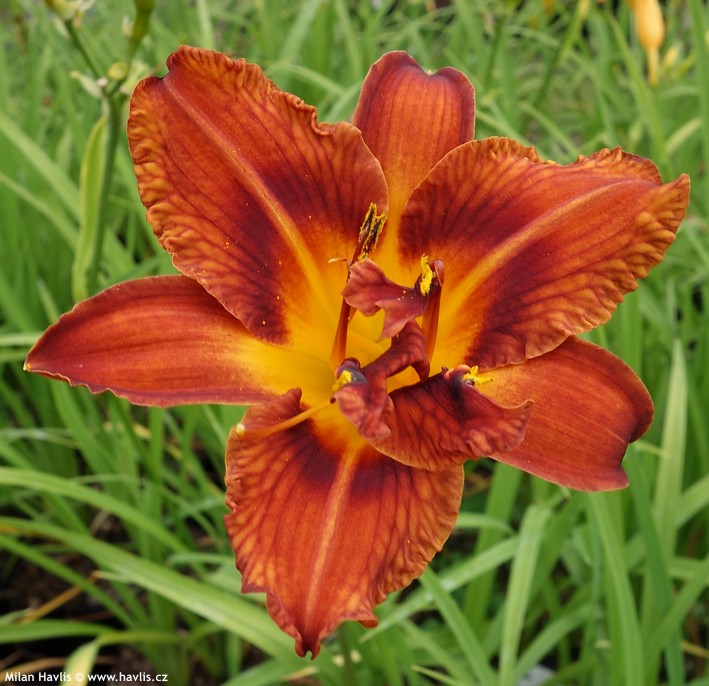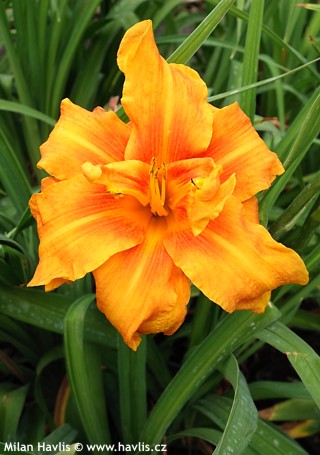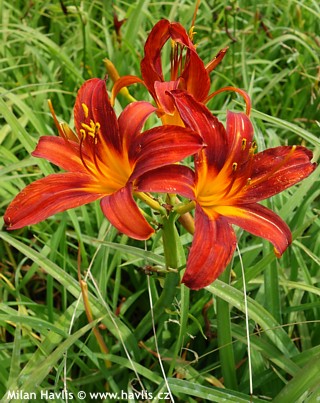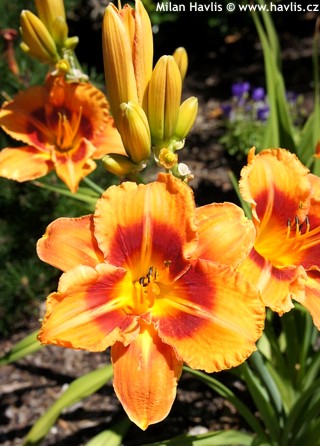Hemerocallis 'DOUBLE BOURBON' daylily
size/type
mid-sized perennial,mid-sized perennial
usual height
0,6-0,8m
usual width
0,4-1m
leaves
deciduous broadleaf
colour of leaves
flowers
showy
colour of flowers
blooming time
June-August
location
full to partial sun
winter protection
for zone 5+6

for zone 7

categorized
Hemerocallis
Daylilies are flowering queens for one day. Each bloom lasts a day but there is no need to worry – every stem bears more blooms and as the plants grow older they have numerous stems each. This low-maintenance perennial is a miracle for those who have limited time to spend looking after their gardens because apart from occasional watering on hot and dry summer day it needs ABSOLUTELY NOTHING. And still it can leave us gazing at their beautiful, lily-like blooms of every possible colour you can think of (except for blue and black).Description of the plant:
Double Bourbon is a semi-double daylily combining deep and warm shades of golden yellow, orange red, and mahogany brown. It blooms from June and in good summer continues until early or mid August. The warmer the early summer the more double the bloom gets. Stems are about 70 cm tall, and leaves are narrow and die before winter. Bred in 1968.This daylily was bred by Currier McEwan, a renowned rheumatologist, a pioneer in arthritis research, and former Dean of Medicine of New York University, who got to be a gardener by accident, as he says. On a cold winter day in 1956 a postman brought a plants catalog that could not be delivered due to a non existent address of another McSomebody, and as McEwan was the only Mc in the neighborhood the postman convinced McEwan to keep it. So he did and quickly grew fond of the nice pictures of plants in it. He ordered a few and to cut a long story short, the year after he made the first hybrids of his own. He spent 45 years hybridizing mostly irises, but he loved daylilies, too, and came up with 61 varieties , most of them from the 1960's till 1970's. The last two varieties were registered in 1990, and he bred them along with the Brooks who themselves have 168 varieties in their account to date. Currier McEwan died in 2003 aged incredible 101 years.
The leaves are deep green, strong and healthy. They appear early in the spring and persist until winter unlike spring bulbs whose leaves wither away after flowering. Apart from occasional slug attack there are no pests or diseases they would suffer from. Put your day lilies on a sunny spot and fertilize it for better flowering every spring, if you want to. It tolerates all types of soil, preferably it likes moist soil. Very hardy to min. -40°C (USDA zone 3).
Last update 04-12-2016
QUICK PRICE OVERVIEW
CURRENTLY SOLD OUT
WANT TO TRY A SIMILAR PLANT?












